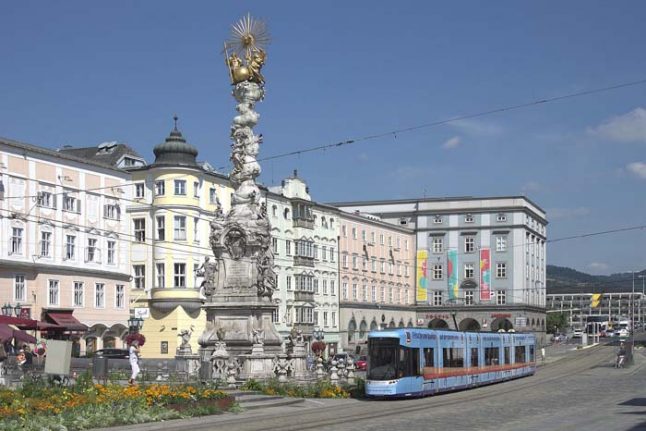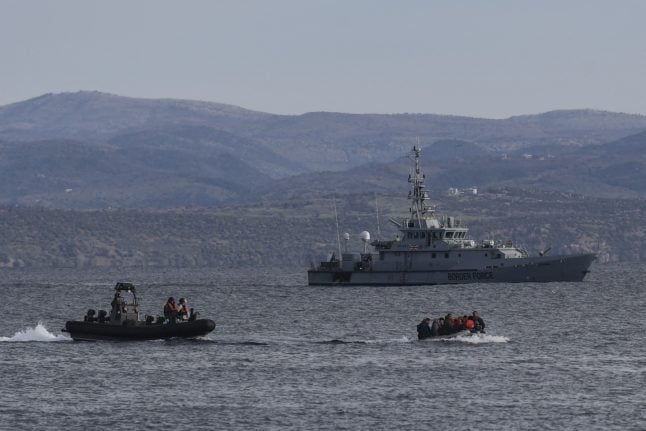On the evening of Halloween, dozens of people rioted in Linz. Images on social media appear to show that most of them look young, and the data released by the police confirmed that.
Among the 129 suspects identified, most (73) are younger than 18, while 26 are considered to be “young adults”, so younger than 21.
What the authorities have not been able to pinpoint, though, is what led to the rioting, which ended with damaged property, injured police officers, and almost 130 people taken into custody.
What exactly happened?
On Halloween evening, October 31st, around 200 took downtown Linz streets on a rampage, damaging storefront windows and attacking unrelated groups of people with stones and even firecrackers.
READ ALSO: Have your say: Where are the best and worst places to live in Vienna?
As a result, some 170 police officers were called out to the scene to try to drive the rioters away, Austrian media reported. The five-hour operation resulted in nine arrests and two police officers were injured. On Tuesday evening, riots broke out again, but on a much smaller scale and the people left once police arrived.
One thing that draws attention to the episode – other than the unexpected violence – is that many of the people involved were not Austrian citizens. In a country where immigrations is always a contentious issue, this issue was bound to make the headlines.
According to the police, one in three rioters were Austrian citizens. Among the 129 identified suspects, 35 are persons entitled to asylum and five are asylum seekers. In terms of nationality, it is a heterogeneous group, according to broadcaster ORF.
Twelve EU citizens, 28 Syrians, and 14 Afghans. Among the Austrians, the police said 34 had a “migration background” – the report didn’t clarify precisely what that meant.
Serbs, Kosovars, North Macedonians, Romanians, Thais and Bosnians were also in the group.
READ ALSO: Tents for asylum seekers stir debate in Austria
However, authorities are still investigating the incident, and there is no final report on the age or nationality of all involved.
What was the role of social media?
The other point that ensured the riots would stay in the headlines for a while was how they came to happen.
According to the authorities, the initial evaluation is that the event was unorganised and the rioters had no clear structure. Instead, it was more likely “a loose gathering of young people who had joined forces via social media”, Der Standard reported.
The police are now looking into several videos on TikTok, where young people announced the rioting by saying they wanted to turn Linz “into Athena”. Some videos had more than 19,000 likes and comments discussing how the night would be of “war”.
READ ALSO: IN NUMBERS: Who are the asylum seekers trying to settle in Austria?
The Athena comment references a film available on the streaming platform Netflix. The plot centres on the chaos erupting in a French neighbourhood known as Athena after the brutal killing of a child of Algerian origin. Massive riots and confrontations between the police and the population are shown.
What is going to happen now?
The police are still piecing together everything that happened two days after the riots. On social media, there are calls for further rioting (on New Year’s Eve), and xenophobic and racist comments as well, with many blaming asylum seekers and migrants for the events.
“There’s a lot of tension in the air,” Erich Wahl of the Youth and Leisure Association (VJF), which is in charge of youth work in Linz, told Der Standard on what could have motivated the riots.
READ ALSO: What measures against foreigners is Austria’s far-right trying to take?
Wahl mentioned that the Covid-19 crisis, inflation, and even the war in Ukraine could add to “built-up anger”, especially in young kids. Added to that, immigrants are often in a more difficult situation.
For example, young people with Afghan, Syrian and Iraqi citizenship have a 21.9 percent unemployment rate, almost four times higher than for Austrians, the daily added.
Interior Minister Gerhard Karner (ÖVP) said the government wants to use “the full force of the law”.
Karner focused on the third-country citizens, saying their permits would be “examined” and that removal from the country could occur in serious criminal offences.
READ ALSO: ANALYSIS: Could Austria ever change the rules to allow dual citizenship?
He added that he wanted deportations to happen also to Syria and Afghanistan, where most of the suspects were from, but mentioned that this would be in the “long-term”, as deportations to war states are not allowed under international law.



 Please whitelist us to continue reading.
Please whitelist us to continue reading.
Member comments